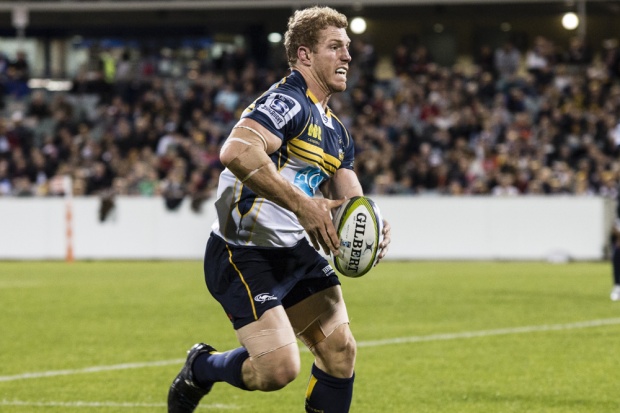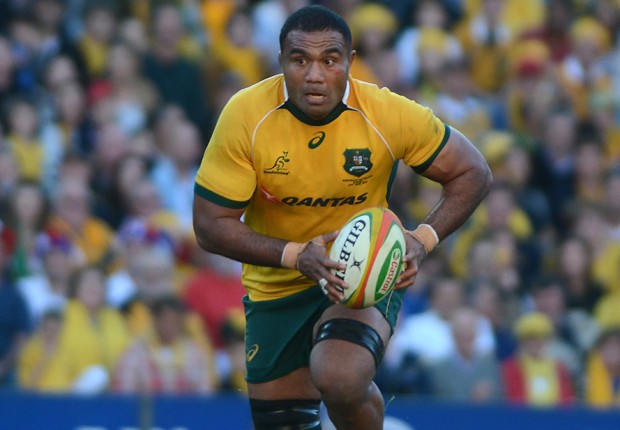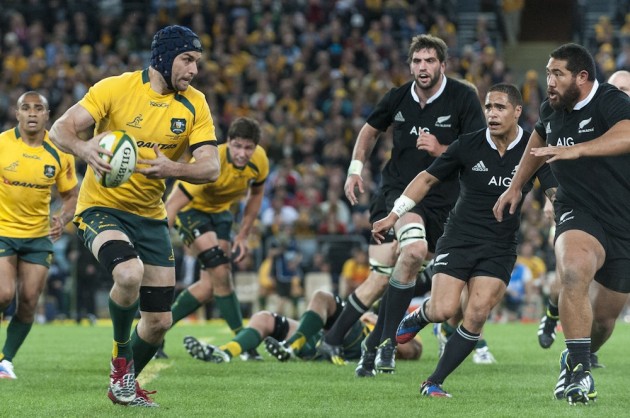Scheduled Website Maintenance
We’re currently in the process of moving to a new and improved server environment. During this transition, the website may experience brief interruptions or temporary outages.
We appreciate your patience while we complete this upgrade. Service will return to normal shortly, with improved performance and reliability.
Thank you for your understanding.
A hard truth: no-one thinks the Wallabies are a serious challenger in this World Cup. Nor should they.
Since the Lions series in 2013, they haven’t won consistently against any of the contenders, save Wales. Numerous top players who otherwise would be in contention for the Cup squad have headed overseas. We have a new coach, new systems, new everything.
‘There was a lot of explanation to me [from the players] about how they played on Spring Tour in attack”.
That’s Stephen Larkham, the new attack coach. Fair enough, but hardly ideal.
One could talk forever about who is responsible for this mess. But for today’s purposes, I think this realisation only reinforces Bob Dwyer’s point about picking on potential: If we choose the same players, we’re simply not going anywhere. Australian rugby has nothing to lose. We have six matches including the pool games against Fiji and Uruguay before things get real. It’s not a lot of time to develop things. But in truth the squad will be in camp for a solid three months before the first serious match against England on 3 October.
Today the forwards of the Wallabies world cup squad.
Likely 18 forwards will go to the World Cup; five will have to be props to cover the change to eight-man benches.
Props
Slipper, Sio, Kepu, Alo-Emile, Holmes
This week Clive Woodward commented,
“Out of the three southern hemisphere countries, the Achilles heel for Australia is the scrum, that’s what we all think. Nothing’s changed moving into this World Cup. Australia has to arrive at Twickenham with a scrum or we’ll munch them again, there’s no doubt that will happen.”
I don’t like him. But he’s not wrong.
Slipper and Kepu are signed, sealed, and delivered. Together, that’s the best prop pairing Australia has had in fully 15 years. The depth isn’t there, but the quality at the top is. Sio and Alo-Emile are good back-up options, offering both scrummaging prowess and carrying punch. Both have been immensely impressive this season – and I’m biased against Paul as I used to play in the mighty Sydney Uni 3rds colts with Laurie Weeks.
No team is winning a World Cup with the two Bens. Australia has to compete in-tight and up-front this year, or else they may as well stay at home. No opposition team (or under-pressure referee) is going to be worried by the same old Australian front row.
Hookers
Moore, Polota-Nau, Faingaa
Pick themselves. 178 test caps right there. Faingaa was outstanding last year when called up a-la Steve Merrick to play for the Wallabies.
Locks
Rob Simmons, Adam Coleman, Will Skelton, An Other
Lock is our biggest problem area, without a doubt. In 2011, the Wallaby lock contingent was Simmons, James Horwill, Nathan Sharpe, and a fittish Dan Vickerman. Quite the quartet (three are lineout callers, to boot).
How things have changed. Horwill looks like a completely different player to the dominant force of the 2011 World Cup. The cupboard is pretty bare too: the Rebels’ first choice locks, Jones and Timani, aren’t even out-and-out locks.
By contrast, one can only like the emergence of Adam Coleman out west. Detractors will point to his match-losing penalty against the Bulls. They ignore the context: Coleman smashed not one but two guys in the 80th minute of a match at altitude. Has anyone seen Sam Carter smash someone, ever? How did the ARU allow Kane Douglas, Paul Alo-Emile, Nic White, Digby Ioane, and countless other talents to leave for Europe, while offering Sam Carter a three-year deal? Does anyone know? Power and stamina; Coleman is the future. We may as well get him in now, as we have nothing to lose.
Ultimately, things are wide open here. Anyone who can string a handful of good games together is probably in with a shout. The temptation to bring Scott Fardy into lock, or to pick a lock/6 like Dave Dennis or Lopeti Timani must be very strong indeed.
Openside
An embarassment of riches – Pocock, Hooper
For anyone who hasn’t seen Pocock single-handedly keep a woeful Brumbies side in the game against the Blues last Friday, grab the popcorn, sit back, and be transported to the 2011 RWC Quarter Final against the Springboks. The man is a beast.
Just to get somewhere at the World Cup, Australia faces England and Wales in the pool, followed by (almost certainly) either France or Ireland in the quarters (if we get there). Wales aside, I have a very hard time believing that at a World Cup, against conservatively minded teams at the best of times, in Europe, in late autumn weather, with points at a premium, the Wallabies aren’t better served by a limpet-mine turnover-merchant like Pocock at 7 instead of Hooper.

Liam Gill is an outstanding player, but he won’t be on the plane unless one of those guys is injured. (For all those westies complaining about G&GR never mentioning Matt Hodgson… Matt Hodgson).
I’m already into the controversy, so I may as well go the whole hog: David Pocock should be the guy named captain of the squad. He’s clearly the best communicator with the referees of the available contenders (certainly a step up on Stephen “Easter Island” Moore). He’s a natural born leader, in both word and deed.
By contrast, Hooper has twice gotten on Craig Joubert’s bad side; he’s a great player, but he’s not the captain we need. Importantly, Pocock has shown with his vastly increased ball carrying this year a clear acknowledgement that he needs to improve this part of his game (a la late career Richie McCaw). I’m not unconvinced that having both on the field, especially in the closing stages, couldn’t work (though this is clear hypothetical territory).
Ok, fire your best.
No. 8
Palu, McCalman
At 8 things are very unclear. Cliffy Palu, when on song, still has the ability to put in big shifts. The problem is, like an ageing rock band, those good songs are fewer and farther between. Ben McCalman continues to do the grunt work out in the west. He’s unflashy, but he gets the job done.

Ita Vaea has shown a lot to like at times this year, especially with his ruck work throughout the match. Oddly enough for a massive unit with a low centre of gravity (a definite Bily Vunipola look alike), he hasn’t done a huge amount in the carrying realm. If that changes, he just might be a bolter – an 80 minute, impactful No. 8 frees up lots of other options. That said, Vaea isn’t a viable lineout option; which might be important if, say, Will Skelton is on the field.
Opinions on this site are very divided on Scott Higginbotham (cf. Bob Dwyer). There is no question that he’s a talented footballer and I’ve seen him play some great games, especially in 2013 when he went through a Grimace-purple patch with the Rebels. But is he the consistent, mature, bankable No 8 we need at a World Cup? Hardly. He goes missing. He seems to switch off. He becomes a penalty magnet. Or all at once. The real problem is that he just hasn’t developed: no aspect of his game is better than it was when he left the Reds. He shouldn’t be on the plane to England.
Six
Scott Fardy, Sean McMahon
Scott Fardy is a definite. Along with Pocock, Tatafu, Moore, and a few others, Fardy should be entrusted with defining the culture of the team, what we want the guys to be like as people, both on and off the field.

But the spot for another six is wide open. Sean McMahon continues to impress with his contact-junkie ways and high-octane style. Luke Jones looks desperate for a team to sign him and actually play him at 6; he looks like a left foot in a right shoe. Lopeti Timani looks to have the right combination of tight-loose play for this role and, to boot, looks a much better player than his older brother, for whom no love is lost on this site. Three 6s from one Super Rugby team tells you everything you need to know about the Rebels.
A lot here will depend on team balance. If Pocock is playing at 7, then the ball running of McMahon or Timani will surely put Jones (or Dave Dennis) well down the pecking order. Similarly, if Hooper is playing at 7, the scrum starts to look pretty ineffective with McMahon on the other side.
So that’s the pigs; next up the princesses. Leave your comments.
